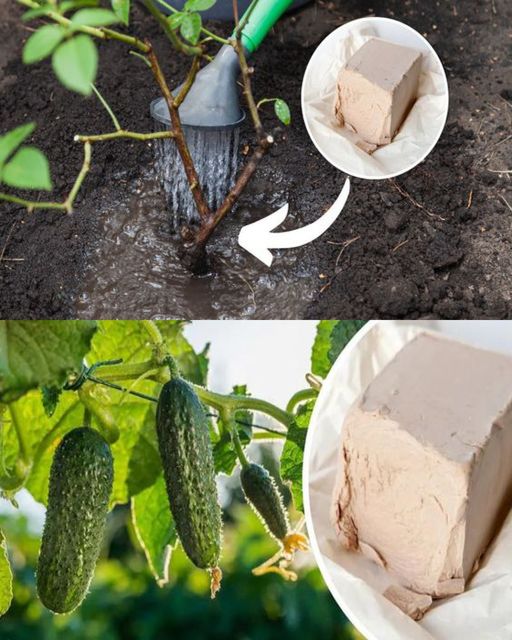
Gardening enthusiasts constantly seek natural and effective methods to enhance the growth and yield of their plants. One such method, which might surprise many, involves using yeast—a common ingredient typically found in the kitchen. This article delves into the science of using yeast in your garden, focusing on three popular garden staples: tomatoes, peppers, and cucumbers. We will explore how yeast functions as a growth booster, the reasons behind its effectiveness, and practical tips for integrating yeast into your gardening routine.
Understanding Yeast and Its Garden Benefits🌱
What is Yeast?
Yeast is a type of fungus that plays a crucial role in various biological processes, most notably fermentation. It is widely used in baking, brewing, and winemaking due to its ability to convert sugars into alcohol and carbon dioxide. However, the benefits of yeast extend beyond these traditional uses; it can also be a valuable ally in the garden.

Benefits of Yeast in Gardening🌱
When applied to garden soil, yeast serves multiple functions that can significantly benefit plant growth:
Enhanced Nutrient Absorption: Yeast can help break down organic material in the soil, making nutrients more accessible to plants.

Improved Soil Health: By promoting microbial activity, yeast contributes to the development of a healthy soil biome, crucial for plant growth.
Natural Growth Stimulant: Yeast contains hormones and enzymes that can stimulate plant growth, leading to healthier, more vigorous plants.
How to Use Yeast in Your Garden
Preparing Yeast Solution🌱

To harness the benefits of yeast for your garden plants, you can prepare a simple yeast solution at home. Here’s how you can do it:
- Dissolve 1 tablespoon of sugar in 1 liter of warm water.
- Add 1 teaspoon of active dry yeast.
- Stir the mixture and let it sit for about 10-15 minutes until it becomes frothy.
- Dilute this solution with more water before applying to your plants to avoid concentration that might harm the plant roots.
Application Techniques🌱

Foliar Spray: Spraying the yeast solution directly onto the leaves of plants can provide them with quick nutrients and stimulate growth.
Soil Drench: Pouring the yeast solution around the base of the plants helps improve soil quality and increases nutrient uptake through the roots.
Boosting Specific Garden Plants🌱
Tomatoes
Tomatoes thrive with the addition of yeast because it enhances their ability to absorb nutrients like nitrogen and potassium, which are essential for fruit development and overall plant health. Regular application of a yeast solution can result in larger, tastier tomatoes.

Peppers🌱
Like tomatoes, peppers benefit significantly from the nutrient uptake facilitated by yeast. Additionally, yeast can help in producing more robust and disease-resistant pepper plants, which are crucial for a good yield.

Cucumbers
Cucumbers often suffer from nutrient deficiencies, particularly if the soil isn’t well-prepared. Introducing yeast into the cucumber beds helps in better nutrient absorption and can lead to an increase in the yield of crisp, healthy cucumbers.

Why Yeast Works: The Science Behind It
The effectiveness of yeast in promoting plant growth lies in its composition. Yeast cells are rich in nutrients such as nitrogen, phosphorus, and potassium—key elements required for plant growth. Additionally, the enzymes released by yeast can stimulate root development, enhance plant immunity, and improve the overall plant metabolism.
Tips for Best Results
Regular Application
For best results, apply the yeast solution to your plants every two to three weeks. This regular application helps maintain the beneficial effects of yeast, promoting consistent plant growth and health.
Monitor Plant Response
Keep an eye on how your plants respond to the yeast treatments. Some plants may be more sensitive, and thus, diluting the yeast solution further might be necessary.
Combine with Compost
Combining yeast treatments with regular compost applications can amplify the benefits, as compost provides additional organic matter and nutrients that support plant growth.
Conclusion: A Natural Boost for Your Garden
Using yeast in your garden is a simple, cost-effective, and natural method to enhance the growth and yield of your plants. Whether you’re cultivating tomatoes, peppers, or cucumbers, incorporating yeast into your gardening practices can lead to healthier plants and more bountiful harvests. By understanding the science behind yeast’s benefits and following practical application tips, you can turn your garden into a thriving, productive space that is both sustainable and rewarding.
